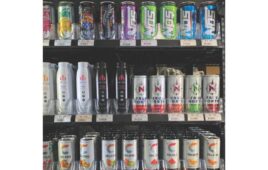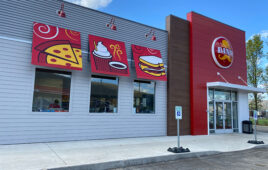Many customers dash into a Maverik convenience store looking for a quick snack to take along on whatever adventure they have planned, whether it’s heading to the office or on a mountain hike.
Often they choose a package of seeds or nuts, according to Ryan Morton, category manager for snacks and groceries at Maverik, the North Salt Lake, Utah-based chain, which incorporates “adventure” as its marketing theme.
“It’s been a pretty healthy category,” he said. “We’ve seen a lot of grab and go. There has been some low-hanging fruit with items such as Frito Lay’s 99-cent packs. That’s a simple price point that has worked well.”
While seeds and nuts remain popular and are considered a better-for-you treat, the category saw a blip in overall sales in 2016, according to Jordan Rost, vice president of consumer insights at the Nielsen Co.
“Salty snacks are still driving strong growth for c-stores with $6.26 billion in total sales (in 2016), growing at 2.6%,” Rost said. “The 2.7% sales and 5.5% unit declines seen in nuts and seeds are consistent with an overall contraction in sales across channels, which despite growing at 3.1% over the last four years, were flat in 2016.”
OUT OF ITS SHELL
Although the performance of seeds and nuts slowed, they have generated good customer response for Maverik. The company sees a demand for sunflower seeds, especially varieties from Spitz that come in flavors ranging from dill pickle and black pepper to chili and barbeque. But offering customers a wide selection and new varieties is more than staying on top of trends.
“It’s a matter of keeping it fresh,” Morton said. “Some other brands have come out with sweeter flavors. Some stuck, and some didn’t. I think you’ve got to experiment. You’ve got to have some space dedicated to trying new things. Some things will be winners, but some are just a roll of the dice. You have to gamble on some things and be flexible if it doesn’t work.”
Maverik uses store schematics that ensure approved items, including seeds and nuts, are placed in the exact location that management has deemed most appropriate.
“We don’t allow vendors to put products wherever they can fit it or leave what they want in the stores,” Morton said. “We do that to maintain the integrity of the stores.”
PROOF IS IN THE PROTEIN
According to research, consumers have looked for more protein-rich, healthful snacks over the past few years.
“Consumers are increasingly open to snacks that fit that bill,” Rost said. “For example, sales of rice and other grain cakes saw a spike in sales in 2016, after years of declines, as more consumers consider healthful grains to be part of a well-balanced diet.”
He predicted growth opportunities in certain varieties of nuts.
Seeds, Nuts Among Superfoods
In 2017, U.S. consumers will continue to be concerned about clean eating as a whole and maintaining a healthier lifestyle, according to a recent food trend survey of 1,700 dietitians. The survey listed the top 10 superfood trends for 2017, which include seeds, such as chia and hemp; avocado; nuts like almonds and walnuts; fermented foods such as yogurt; and ancient grains in the top five. Kale, green tea, coco-nut products, salmon and exotic fruits round out the top 10.




